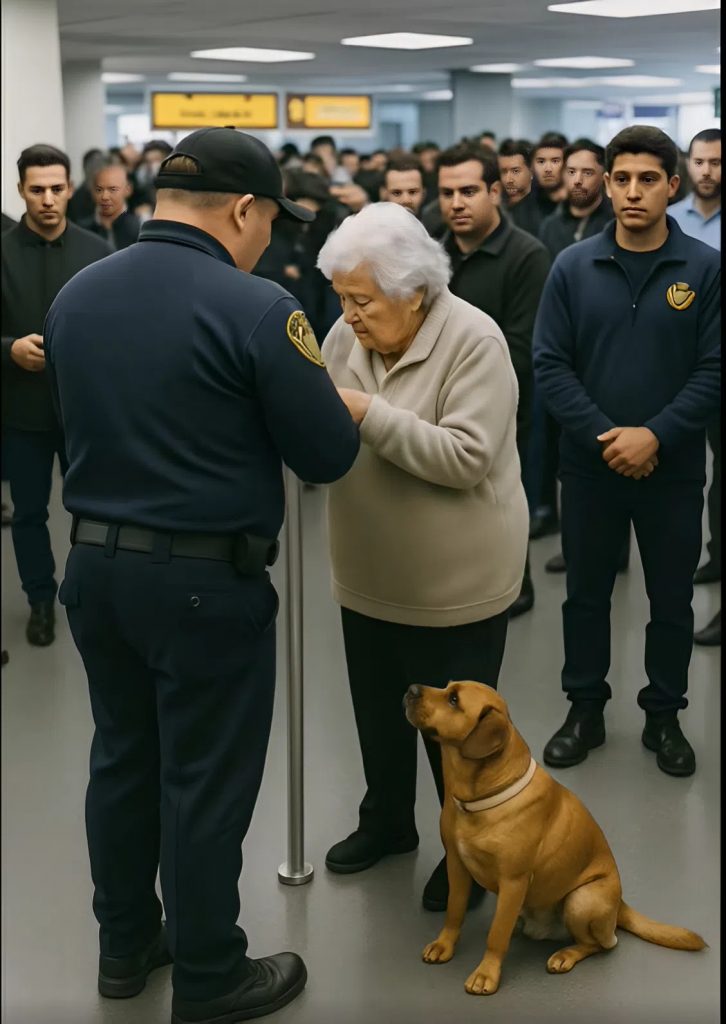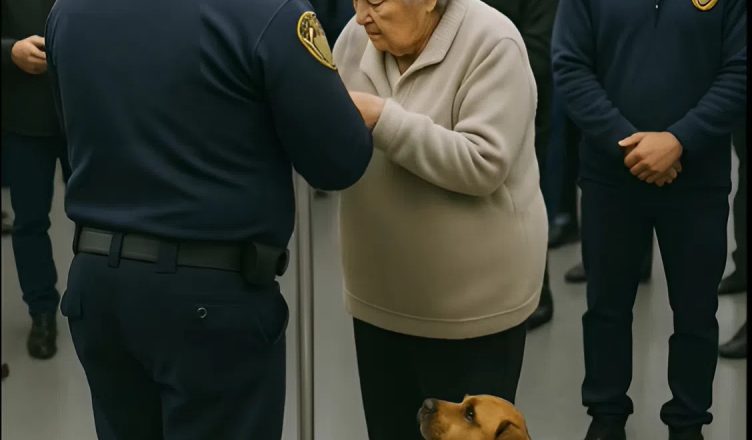That morning, the police station was quiet, almost sleepy. Outside, a damp wind swept the empty street. Inside, the ticking clock was the loudest sound—until the door creaked open and an elderly woman in a long gray coat stepped in. A wool scarf was tied neatly under her chin, and on a short leash trotted a plump, reddish-brown dog whose tail wagged so vigorously it seemed ready to lift him off the floor.
She approached the counter and, without hesitation, said:
— I need to see your commanding officer. Immediately.
The duty officer looked up from his paperwork, puzzled.
— Ma’am, do you want to file a report?
— Not exactly, — she tightened the leash to stop the dog from jumping. — I’ve come to tell you something important. It’s about my dog. And maybe… something bigger.
The officer glanced at the dog, who at that moment was trying to climb onto the counter, tongue hanging out, eyes sparkling as if he’d just won the lottery.
— Ma’am, — the officer said cautiously, — if your dog isn’t feeling well, there’s a vet across the street.
— No, you don’t understand! — her voice trembled, edged with urgency. — I’ve lived with him for years. I know every look, every gesture. But in the last two weeks, he’s changed. He’s not just happy—he acts like he’s under the influence of something. As if… — she hesitated, — …as if someone’s been giving him something.
The room fell silent. One young officer whispered:
— Maybe we should call social services?
But the senior sergeant, a gray-haired man with a sharp instinct for trouble, raised his hand.
— Bring her into the interview room.
The story unfolds in the kitchen
In the small room, she explained her life: alone in an old house on the edge of town, mornings spent feeding the dog, taking him out, doing chores. But lately, the dog had started disappearing for an hour or two, returning unusually excited. At first, she thought he had found other dogs to play with. Then she noticed—no matter how long he was gone, he never got tired. Instead, he was buzzing with energy, his eyes too bright.
— His eyes… — she stroked the dog’s head with a shaking hand — they’re different now. Too bright.
The sergeant asked where exactly the dog went. The woman admitted she’d seen him slip through a hole in the fence to the neighboring yard. There stood an old, half-abandoned garage. She never got closer—it was in a rough part of the neighborhood.

Operation “Happy Dog”
Two officers were sent to check the garage. Almost immediately, they found a group of young men inside. On the floor: bags of unknown powder, and beside them, a bowl with traces of food that, according to experts, contained narcotic substances.
The investigation revealed that the young men knew the friendly dog often wandered in. They had been feeding him scraps laced with traces of the drugs—just to watch him act unusually hyper. To them, it was a “joke.” But the doses building up in the dog’s system could have been fatal.
The aftermath
The suspects were arrested. The dog received emergency treatment, and the vet confirmed: traces of illegal substances were found in his system. The woman cried quietly in the police station.
— I knew it wasn’t just happiness… — she whispered.
The story spread quickly through the neighborhood. Neighbors admitted they had seen shady people near the garage, but none connected it to the dog.
As the sergeant closed the case file, he said something later quoted in the local paper:
— Sometimes, a report about a “too cheerful dog” isn’t a joke. It’s a warning that something dangerous is happening right under your nose.
